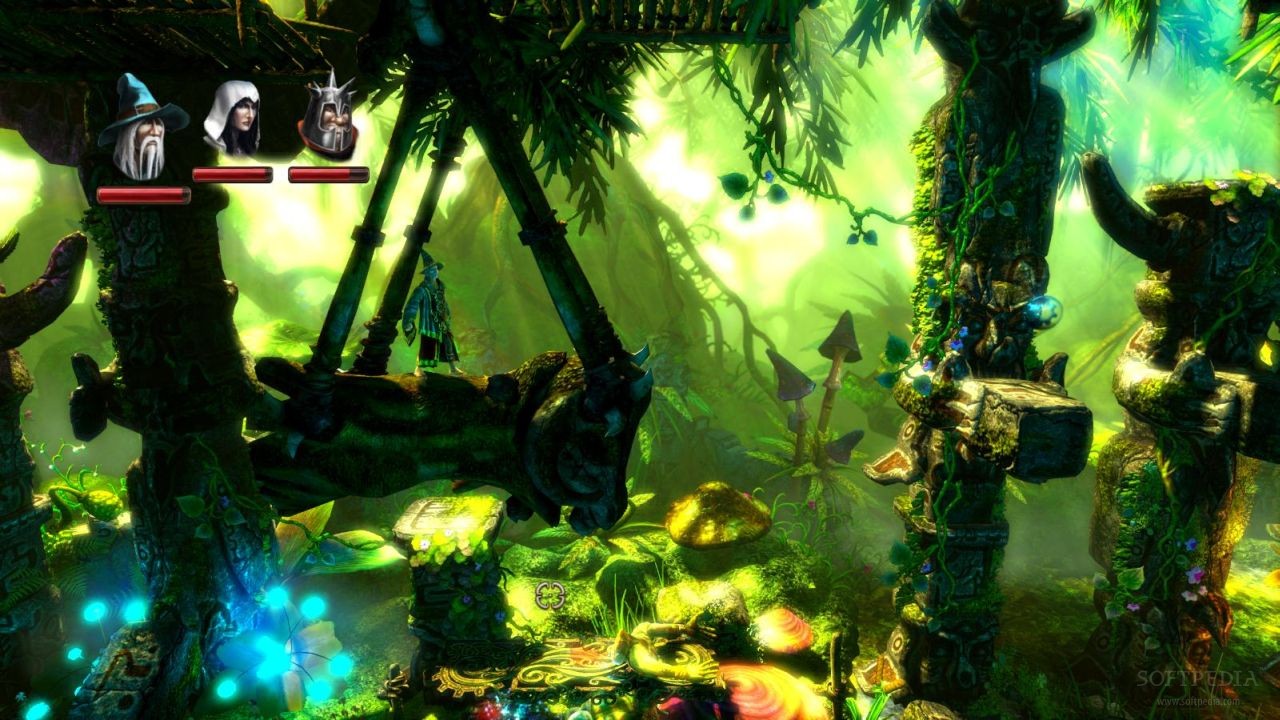
If the wizard has had his skills improved, he can maybe make multiple boxes and simply climb those. A simpler game might force you to have the wizard create a box and drop it on the counterweight platform, which would be one option in Trine 2, but there are always others. You might encounter a drawbridge attached to a pulley as a counterweight. Its key component is its physics, which creates grey areas in puzzle-solving. It’s over-the-top, and it walks a fine line between “charming fantasy” and “Lisa Frank kitsch”, but at times it is stunning that a so-called “indie” game can look this good.ĭespite its intentional crafting and linearity Trine 2 actually offers a remarkable amount of freedom, thanks largely to having a core game engine that allows for experimentation with different solutions. Aesthetically, every section of the game feels crafted to be as beautiful as it possibly can, using an overwhelming barrage of colored, glowing lights and clever animation. Trine 2 uses its linearity to the best possible effect.
#TRINE 2 REVIEWS SERIES#
The game is also completely linear, as you travel from left to right through a series of levels, solving increasingly difficult puzzles on each screen. The wizard can create boxes and levitate items, the knight is best in combat, and the thief can grapple and swing from wooden objects. Each character has different skills that are used to solve puzzles and defeat goblins along the way. Like the original Trine, Trine 2 is a fantasy side-scrolling game where you control a wizard, a thief, and a knight on a fairy tale-like quest to save a kingdom. It’s a timing coincidence, of course, but it’s a coincidence that highlights what makes Trine 2 impressive: it’s refreshingly and delightfully small in scale. It’s fun coordinating puzzle solutions with friends, with dialogue emerging as “Okay, I’ll go over here and you go over there – no wait, what if you just do… this? Whoa, that worked, cool.Trine 2’s December release sets it in-between two epic open-world games, the single-player Skyrim and the massively multi-player Star Wars: The Old Republic. The co-op works beautifully – if you play local, one person handles the keyboard while two friends can plug in game pads, and the game controls well in either approach, with both control types having unique advantages. We can’t say one is better than the other: we recommend playing through once in each form, because puzzles can be solved in totally different ways if you have friends along, but it’s most challenging in single-player. It also now includes both local and online co-op, and we must say that while the game is fantastic in single-player, it transforms into a whole other experience in co-op.
#TRINE 2 REVIEWS PC#
Trine 2 has also expanded its inclusiveness: while the original released only on PC and then later on Mac and PS3, the sequel is available now on PC and Mac, and will soon release on PS3 (12/20) and 360 (12/21). We wonder, though, if the devs took the easy way out: instead of removing a player tool, could they have wracked their own brains to come up with puzzles devilish enough to challenge players despite such powerful options? Either way we’re not complaining too much, because Trine 2’s puzzles reach sublime levels of balanced challenge and open-ended solutions. Without that skeleton key, Trine 2 comes up with some devious situations that will probably make you say “What the? That’s impossible to overcome!” Of course, overcoming these hurdles becomes extremely satisfying. We realized, though, that such a combination made some of Trine 1’s puzzles irrelevant and made the game a bit too easy. It’s this freeform problem solving that makes Trine 2 such an empowering experience.Īt first we were confused by the developer’s decision to remove character abilities that were a big part of the first game – the wizard used to be able to conjure floating platforms and allow the thief to grapple onto them. Occasionally we’d create a pile of objects on a steep slope and simply jump across it before the whole teetering mess collapsed and tumbled down into a pit – a seriously sloppy solution, but no less a valid one. We used the cube stack as both a foundation for the plank, and as a launch point for our jump that got us to the next ledge. At one point we managed to stack two cubes on top of each other and then create a plank that we then leaned against a button that needed to be held down (and which was high up on a wall). Since the wizard can conjure cubes and planks that have physical weight in the world, all kinds of weird setups can circumvent problems.

We know this because there were puzzles where objects, levers, or portals were present and we didn’t even use them. We’re quite sure that half the solutions we devised weren’t the “right” answer to an obstacle.



One of the wonderful things about the Trine philosophy is that the game encourages you to make up your own solutions to puzzles.


 0 kommentar(er)
0 kommentar(er)
